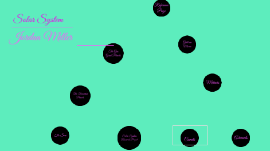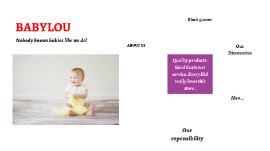solar system powerpoint
Transcript: Solar System Jordan Miller Solar System Research Project In this powerpoint i will explain the Sun ,the Terrestrial planets ,the Gas giants planets and ect. after my powerpoint is done you should leanr a lot of new things about the Solar System Solar System Research Project The Sun It's between the Sagittarius and Perseus Arms of the Milky Way. The Sun is located in the inner rim of the Orion Arm, which is thought to be an offshoot of the Sagittarius Arm. The sun is mostly composed of the elements hydrogen (H) and helium (He). By mass the composition of the sun is 75 percent hydrogen and 25 percent helium. the layers, mainly the photosphere, the chromosphere and the corona. Role of Gravity in Solar System. Planet Earth is held in its orbit around the Sun by the force of gravity , because the Sun has such a great mass, it exerts a very powerful gravitational pull The Sun A terrestrial planet, telluric planet, or rocky planet is a planet that is composed primarily of silicate rocks or metals there are four terrestrial planets which are mercuny, venus, mars, and earth The Terrestrial Planets The Terrestrial Planets Earth Earth Earth is located in one of the spiral arms of the Milky Way (called the Orion Arm) which lies about two-thirds of the way out from the center of the Galaxy.Earth size is 12,742 km , 149,598,262 km form the sun. Earth, of course, has just one moon Mars is the fourth planet from the Sun and is the second smallest planet in the solar system.often described as the “Red Planet” due to its reddish appearance.Mars 6,779 km, and 227,943,824 km from the sun. Mars has two moons, Phobos and Deimos. Mars Mars Mercury Mercury Mercury is the closest planet to the Sun. Mercury 4,879 km, and is 57,909,227 km from the sun. mercury has no moons. Venus 12,104 km, and 108,209,475 km form the sun. and has no moons, so it has the nicknames Morning and Evening Star Venus Venus A gas giant is a large planet composed mostly of gases, such as hydrogen and helium, with a relatively small rocky core. the gas polanets of the solar system are Jupiter, Saturn, Uranus and Neptune The Gas Giant Planets The Gas Giant Planets Jupiter Jupiter 139,822 km, and 778,340,821 km form the sun. jupiter has 69 moon soame of the moons are Euprope , Ganymede, Lo, lasllisto, and adrastea. Jupiter is the fifth planet from the Sun and the largest in the Solar System. . One of Jupiter's most famous features is the Great Red Spot. It is a giant spinning storm, resembling a hurricane. Jupiter Saturn Saturn is the second largest gas gaint planet .Mostly made up from hydrogen and helium .Approximately 760 earth can fit inside Saturn . the planet's densty is less than that of water. 1.4 billion kilometer from the sun Saturn Uranus The atmosphere of Uranus is composed mostly of hydrogen and helium, the atmosphere also contains methane , methane in Uranus atmosphere made's red light and, give the planet a blue-green color. the rotation is tilted about 98 degrees . the planet has 27moons Uranus Neptune Neptune is amost a twin to Uranus because, their almost the same size and, also have a atmosphere made up of hydrogen and helium and with some methane . the color of the planet is a bluish color cause by the absorption of the red light by methane. Neptune from the Sun is 2,795,084,800 miles. Neptune has 14 moons some are Triton, Laomedeia, S/2004 N 1, Proteus, Nereid, Despina, Halimede, Neptune Galilean moons are the fur largest moons of Juptier theses moons are Lo, Europa, Ganymede, and Calliso Galilean Moons Galilean Moons Europa ana Lo Lo is the thrid larrgest of jupiter's moons .Lo has a iron core and stretched and squeezed by the gravitational of jupiter . Lo is more volcally active than any other ogject in the solar system Lo Europa Europa is the second closet Galilean moon to Jupiter and, it is the fourth largest moon of Jupiter . it has a rocky structure and may have a small, metetalic core. Europa's distance from the sun is about 485 million miles. Ganymede Ganymede is the largest and most massive moon of Jupiter and in the solar system Ganymede is the ninth largest object in the solar system Callisto Callisto is the farthest Galilean moons from jupiter and it is the second largest of juipters moons. it is about the size of mercury . it compostion ias 60 percent rock and 40 percent ice , Callisto is the most heavity craterd object in the solar system meteors are small bodies of mater from outer space that once was a meteroid until it entered earth atmospher meteors are often called shooting starts Meteors Meteors stony meteorite most common meteorite made of silicate minerals, just like rocks of earth . some stony meteorites also contain small amounts of oraganic matter Stony Meteorite iron meteorite Iron meteorites are composed of iron and nickel comes from asteroids Iron meteorite an Astersoid is a small, irregularly shaped, rocky object that orbits the sun most Asteroids are located between the orbit of mars and jupiter Asteroids Comets

















